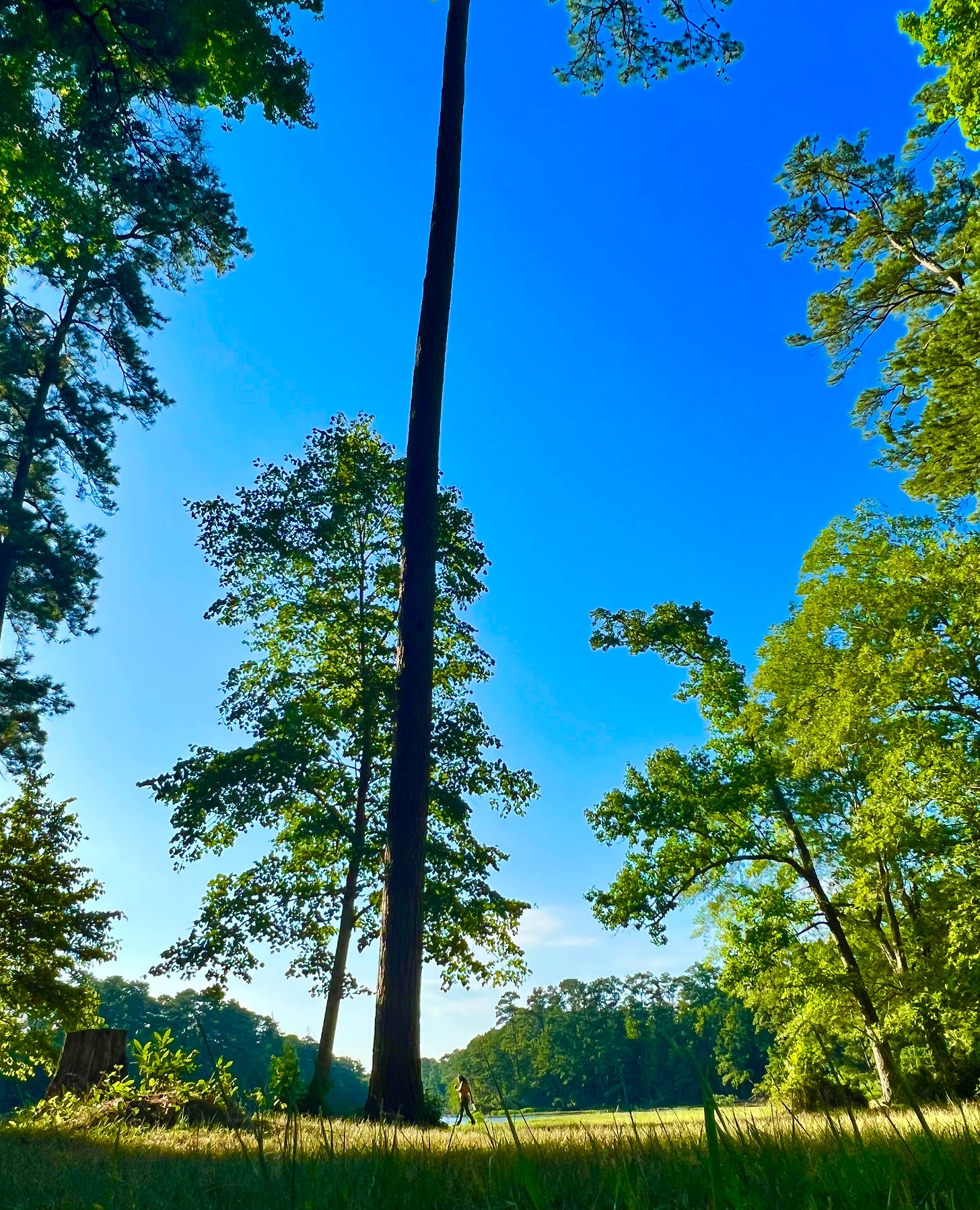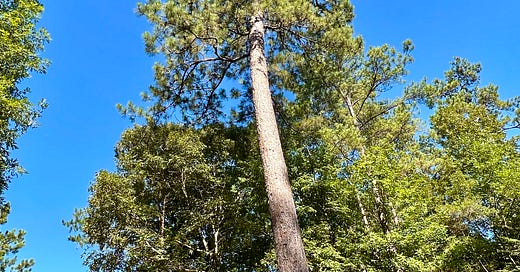Old Trees Outlive Empires: Churches Don’t Grow Leaves - Confessions of an Autistic Earth-Worshipper in a Dying Texas
No place has ever felt as holy (to me) as an undisturbed wild place, especially one with a clean body of water and large, old shade trees.
I've been on a journey of coming back to myself.
This journey is not the kind where you see rapid changes, but the kind that often feels agonizingly slow (as if you're digging a giant hole with a tiny spoon). It is never-ending and constantly expanding as I grow and evolve.
Welcome back to another Founding Member Post!
Twice each month I will put out an exclusive post like this one (often on a more intimate and personal topic, book sneak peeks, OR featuring some of the training materials I’m teaching) that will be brought to you by and for our Founding Members.
When I am scheduling this post, we have Forty Five Founding Members!
I won’t put them on the spot today, but you know who you are. I can’t thank you enough for your support (especially in this moment).
On my journey, I have two primary guidelines that I try to follow:
One of the journey guidelines is to be good to the earth.
To me, being good to the earth is more than just reducing waste and not running the sink when I brush my teeth (though those are good things to do).
It's about leaving the world and its creatures (plants, animals, humans, and otherwise) better than I found them whenever possible. It's about treating them with kindness and compassion and understanding that our actions have a ripple effect on the world around us.
I take care of the earth because it's our home; if we care for it, it will care for us. This responsibility is even more crucial in the face of potential destruction by the greedy ultra-rich, who prioritize profit over the planet.
The other guideline I have set for myself is to always try to be the best version of myself (learning from my mistakes so they make me a better person tomorrow).
My guidelines don't create anything glamorous; often, they lead me to spend hours picking glass and other trash at various locations we stop at during our travels or more recently around central Texas, while reflecting over recent mistakes I've made, trying to frame them into learning lessons, so that I can prevent myself from repeating the same mis-steps over and over again... and sometimes I STILL make the same mistakes, even after I tell myself not to (which used to wreck me, but now just sends me back to the drawing board).
The way I approach this second guideline has evolved over the years.
When I was younger, I used to model myself after the Neuro-Average people around me, because I thought that's what I was supposed to do (because that's what most people pressured me to do).
When I was diagnosed Autistic at the age of 29, everything changed because I suddenly realized that emulating Neuro-Average people was harming me (and would probably leave me dead eventually if something didn't change). This prompted me to change how I applied my second guideline.
Now that I have more information and have updated my understanding of the problem with my original second guideline, I have become very serious about not competing with or comparing myself to others; instead, I'm trying to beat my personal bests to be the best version of myself I can be, moment to moment.
The Long and Winding Road
It has been the sort of journey where I don't get to see the fruits of my work instantly. Instead, I wait years until I can glance back at myself in the rear-view mirrors of my memories, comparing who I used to be to who I have become through the work.
I feel a deep sense of fulfillment when I look back on years past and see how far I've come.
When I was younger and throughout my 20s, I spent most of my time worrying about the future, which made it difficult for me to exist in the present moment.
Last year, after my grandfather died, I found myself stuck in the past, overwhelmed by waves and waves of repressed memories bubbling and blurring into my consciousness.
Only recently, with the return of warm weather, am I springing back to life, like trees that have been dormant over a long winter.

No place has ever felt as holy (to me) as an undisturbed wild place, especially one with a clean body of water and large, old shade trees.
How could a church, built of benches made from dead trees, and away from the open air, be more holy than a place where trees still stand, alive and growing?




